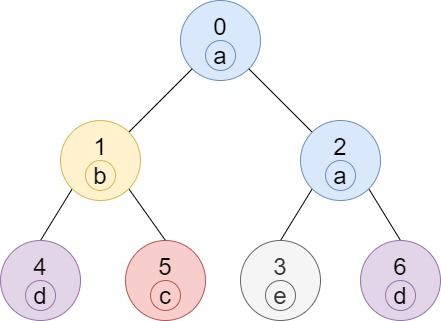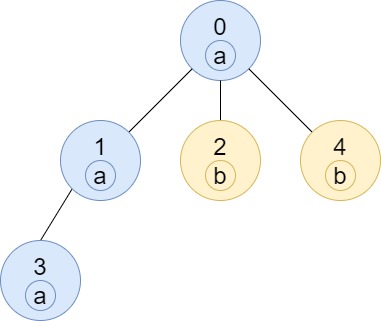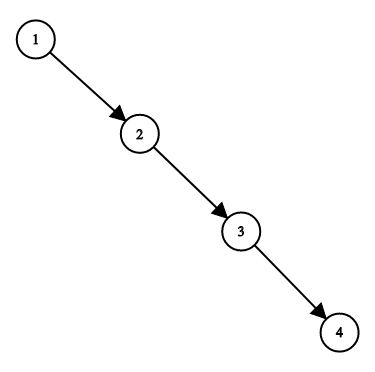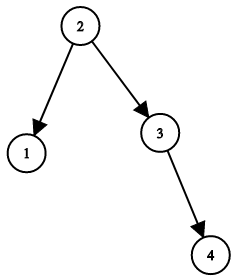写一个函数,输入 n ,求斐波那契(Fibonacci)数列的第 n 项。斐波那契数列的定义如下:
F(0) = 0, F(1) = 1
F(N) = F(N – 1) + F(N – 2), 其中 N > 1.
斐波那契数列由 0 和 1 开始,之后的斐波那契数就是由之前的两数相加而得出。
答案需要取模 1e9+7(1000000007),如计算初始结果为:1000000008,请返回 1。
示例 1:
输入:n = 2
输出:1
示例 2:
输入:n = 5
输出:5
提示:
0 <= n <= 100
注意:本题与主站 509 题相同:https://leetcode-cn.com/problems/fibonacci-number/
来源:力扣(LeetCode)
链接:https://leetcode-cn.com/problems/fei-bo-na-qi-shu-lie-lcof
著作权归领扣网络所有。商业转载请联系官方授权,非商业转载请注明出处。
求斐波那契数列的第n项。看之前的POJ题解: http://code.bitjoy.net/2017/05/04/poj-3070-fibonacci/ 。
一共有三种解法。常规解法就是无脑递归调用。关键是如何分析这种解法的时空复杂度。无脑调用是F(n)=F(n-1)+F(n-2)。想象一下,递归调用二叉树( https://wmjtxt.github.io/2018/12/26/three_method_of_fibonacci/ )。每个节点都会分裂出2个孩子,然后孩子继续2倍分裂,所以总调用次数大概是
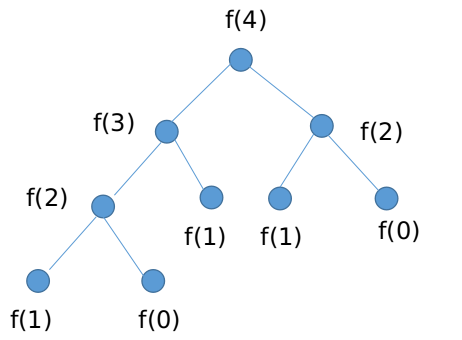
常规解法是,DP的思路,每次保留数列前两项,然后不断更新这两个数。时间复杂度是
class Solution {
public:
int fib(int n) {
if(n == 0) return 0;
if(n == 1) return 1;
long long a = 0, b = 1;
for(int i = 2; i <= n; ++i) {
long long tmp = a + b;
tmp %= 1000000007;
a = b;
b = tmp;
}
return b;
}
};本代码提交AC,用时0MS。
最优的解法是矩阵快速幂的方法,求矩阵[[1,1],[1,0]]的n次幂,然后矩阵逆对角线位置的值就是F(n)的值。快速幂可以做到
typedef long long LL;
class Solution {
private:
vector<vector<LL>> multiply(vector<vector<LL>> &m1, vector<vector<LL>> &m2) {
int n = m1.size();
vector<vector<LL>> ans(n, vector<LL>(n, 0));
for(int i = 0; i < n; ++i) {
for(int j = 0; j < n; ++j) {
for(int k = 0; k < n; ++k) {
ans[i][j] += m1[i][k] * m2[k][j] % 1000000007;
}
}
}
return ans;
}
public:
int fib(int n) {
if(n == 0) return 0;
if(n == 1) return 1;
vector<vector<LL>> matrix = {{1,1},{1,0}};
vector<vector<LL>> ans = {{1,0},{0,1}};
while(n != 0) {
if(n % 2 == 1) ans = multiply(ans, matrix);
matrix = multiply(matrix, matrix);
n >>= 1;
}
return ans[0][1] % 1000000007;
}
};本代码提交AC,用时4MS。


